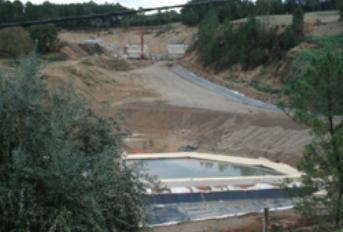Associação Portuguesa de Investigação em Cancro
DNA and immune system alterations in a population exposed to uranium mining wastes
DNA and immune system alterations in a population exposed to uranium mining wastes

Authors and affiliations:
J. Lourenço a,b, R. Pereira c,b, F. Pinto d, T. Caetano a,b, A. Silva e, T. Carvalheiro e, A. Guimarães a, F. Gonçalves a,b, A. Paiva e, S. Mendo a,b
a Departamento de Biologia, Universidade de Aveiro, Campus Universitário de Santiago, 3810-193 Aveiro, Portugal
b CESAM – Centro de Estudos do Ambiente e do Mar, Universidade de Aveiro, Campus Universitário de Santiago, 3810-193 Aveiro, Portugal
c Departamento de Biologia, Faculdade de Ciências, Universidade do Porto, Rua do Campo Alegre, 4169–007 Porto, Portugal
d Centro de Saúde de Mangualde, Estrada da Estação, 3530-125 Mangualde, Viseu, Portugal
e Blood and Transplantation Center of Coimbra, Portuguese Institute of Blood and Transplantation, Praceta Prof. Mota Pinto, Edifício S. Jerónimo – 4, Apartado 9041, 3001-301 Coimbra, Portugal
Abstract:
Biomonitoring a human population inhabiting nearby a deactivated uranium mine
Environmental exposure to uranium and its daughter radionuclides, has been linked to several negative effects such as those related with important physiological processes, like hematopoiesis, and may also be associated with genotoxicity effects. Herein, genotoxic effects, immunotoxicity, trace elements and C reactive protein (CRP) analyses, were performed in peripheral blood samples collected from individ-uals of a population living near a deactivated uranium mine. C reactive protein analysis was performed to exclude candidates with active inflammatory processes from further evaluations. DNA damage and immunotoxicity (immunophenotyping and immune cell counts) were evaluated by comet assay and flow cytometry, respectively. Significant DNA damage was observed in the peripheral blood samples from volunteers living in the Cunha Baixa village. A significant decrease of NK and T lymphocytes counts were observed in the individuals from the Cunha Baixa village, when compared with individuals from the reference site. Uranium and manganese levels were significantly higher in the Cunha Baixa village inhabitants. On the other hand, zinc levels were significantly lower in those individuals when compared with the volunteers from the control village. Results suggest that inhabitants from Cunha Baixa have a higher risk of suffering from serious diseases such as cancer, since high DNA damages were observed in peripheral blood leukocytes and also decreased levels of NK and T cells, which play an essential role in the defense against tumor growth.
Link: http://www.sciencedirect.com/science/article/pii/S0300483X13000164
Journal: Toxicology




